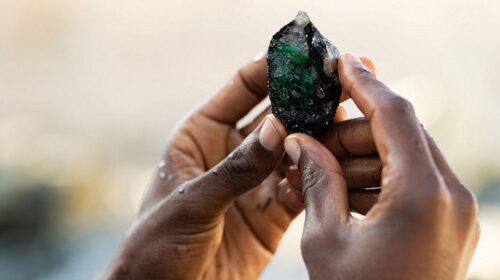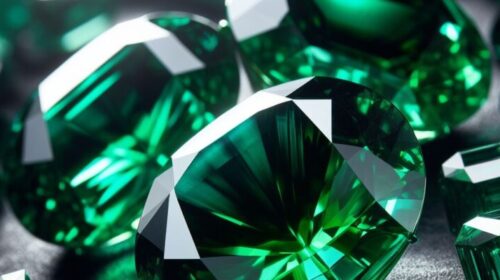Chrysoberyl: One of the World’s Most Exotic and Expensive Gems
The mineral or gemstone chrysoberyl is an aluminate of beryllium with the formula BeAl2O4. Despite the similarity of their names, chrysoberyl and beryl are two completely different gemstones, although they both contain beryllium. Chrysoberyl is the third-hardest frequently encountered natural gemstone and lies at 8.5 on the Mohs scale of mineral hardness, between corundum (9) and topaz (8).
Chrysoberyl belongs to the orthorhombic crystal system, forming with tabular crystals in slender prisms. Crystal twins and triplets are quite common. Common chrysoberyl is colored by iron, while color change varieties obtain their color through chromium.
An interesting feature of its crystals are the cyclic twins called trillings. These twinned crystals have a hexagonal appearance, but are the result of a triplet of twins with each “twin” oriented at 120° to its neighbors and taking up 120° of the cyclic trilling. If only two of the three possible twin orientations are present, a “V”-shaped twin results.
Common chrysoberyl occurs in a variety of light colors, including green to yellow and golden-yellow to yellowish-green, along with various shades of brown and red. Chrysoberyl is colored by iron, while color change chrysoberyl (alexandrite) is colored by chromium. Some ‘common’ chrysoberyl may also contain chromium, but unless they exhibit color change, they are not traded as alexandrite.
The mineral chrysoberyl is very rare but periodically found as an accessory mineral in granite pegmatites, aplites and mica schists. It is also described in altered zones around the margins of ultramafic rocks where they have been intruded by Be-rich granite pegmatites. Because of its favorable hardness and relatively high specific gravity it may also be found as a placer mineral downstream from these hosts.
Chrysoberyl is best known for its use as a gem. There are multiple varieties of gem chrysoberyl, each with its own name and unique physical properties. The three main varieties of chrysoberyl are: ordinary yellow-to-green chrysoberyl, cat’s eye or cymophane, and alexandrite.
Chrysoberyl varieties include two of the world’s most exotic and expensive gems, alexandrite and cat’s-eye chrysoberyl.

Alexandrite, a strongly pleochroic (dichroic) gem, will exhibit emerald green, red and orange-yellow colors and tend to change color in artificial light compared to daylight. The color change from red to green is due to strong absorption of light in the yellow and blue portions of the spectrum. Typically, alexandrite has an emerald green color in daylight but exhibit a raspberry red color in incandescent light. Only chrysoberyl displaying a distinct change of color should be designated as alexandrite. This means that chrysoberyl and alexandrite can be difficult to differentiate. Since stones with a weak change may be called alexandrite or chrysoberyl, the determination can be subjective. As the color change in alexandrite is due to the presence of chromium and the color of yellow or brown in ordinary chrysoberyl is due to the presence of iron, spectroscopic examination will reveal these differences and help with identification. Chrysoberyl usually shows no fluorescence.
Cymophane is popularly known as cat´s eye. This variety exhibits pleasing chatoyancy or opalescence that reminds one of an eye of a cat. When cut to produce a cabochon, the mineral forms a light-green specimen with a silky band of light extending across the surface of the stone. The finest quality cat´s-eye has a sharp silvery white line across the stone that appears to open and close as the stone is rotated and exhibits a strong “milk and honey” effect (the stone on one side of the eye appears lighter than the other).
66 total views , 1 views today





